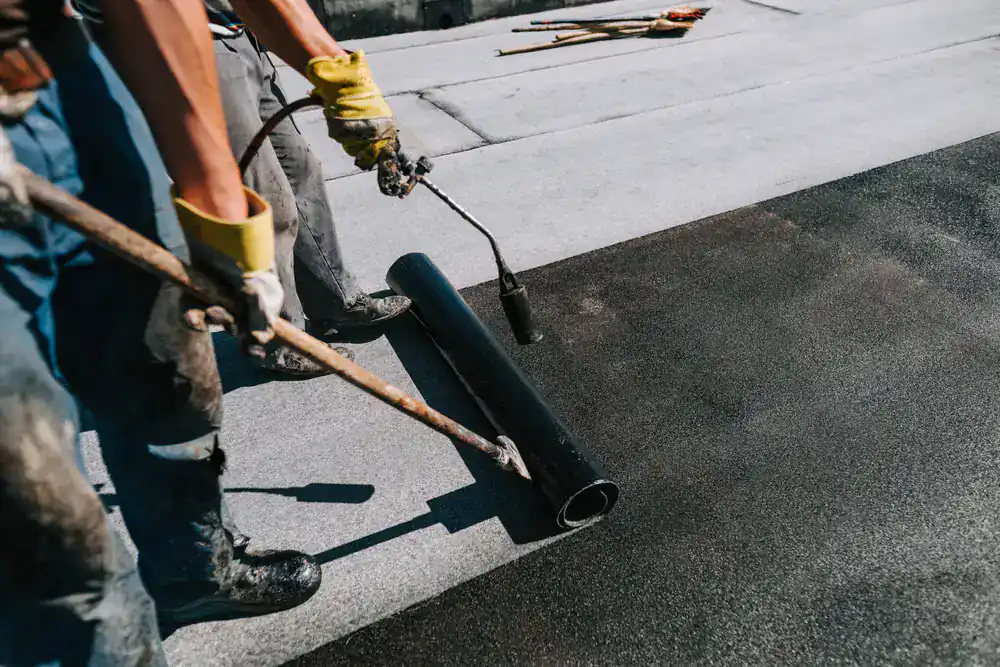
Hear from Our Customers
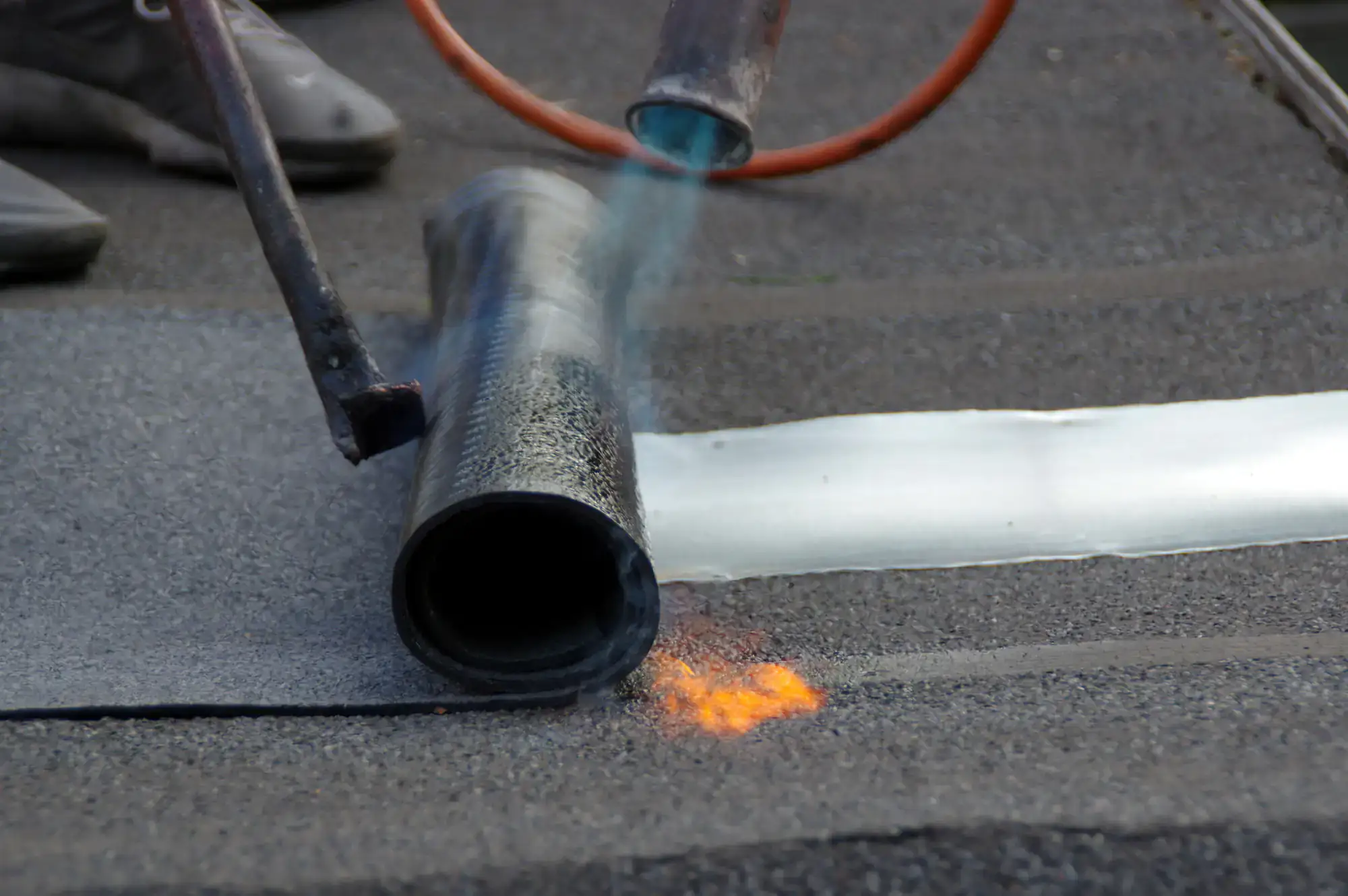
You’ve probably tried fixing that flat roof leak before. Maybe you’ve even had multiple contractors tell you they fixed it, only to watch water drip through your ceiling again after the next heavy rain.
Torch down roofing changes that story completely. This isn’t another temporary patch job that’ll fail in six months. When we install a torch down membrane system on your Yaphank property, you’re getting a seamless, waterproof barrier that’s designed to handle everything Suffolk County weather throws at it.
The difference is in how the system works. Instead of relying on overlapping pieces that can separate over time, torch down roofing creates one continuous membrane. No seams to fail. No gaps for water to find. Just reliable protection that keeps working year after year.
We’ve been solving flat roof problems across Long Island for over 20 years. We’ve seen every type of roof failure you can imagine, and we know exactly what works in this area.
Suffolk County properties face unique challenges. The salt air from being near the coast. Heavy snow loads in winter. Summer heat that can reach scorching temperatures. Most roofing contractors treat every job the same way. We don’t.
Our team understands how Yaphank’s weather patterns affect different roofing materials. We know which torch down systems hold up best against the freeze-thaw cycles that damage other flat roofs. That’s why property owners keep calling us back – and why they refer their neighbors to us.
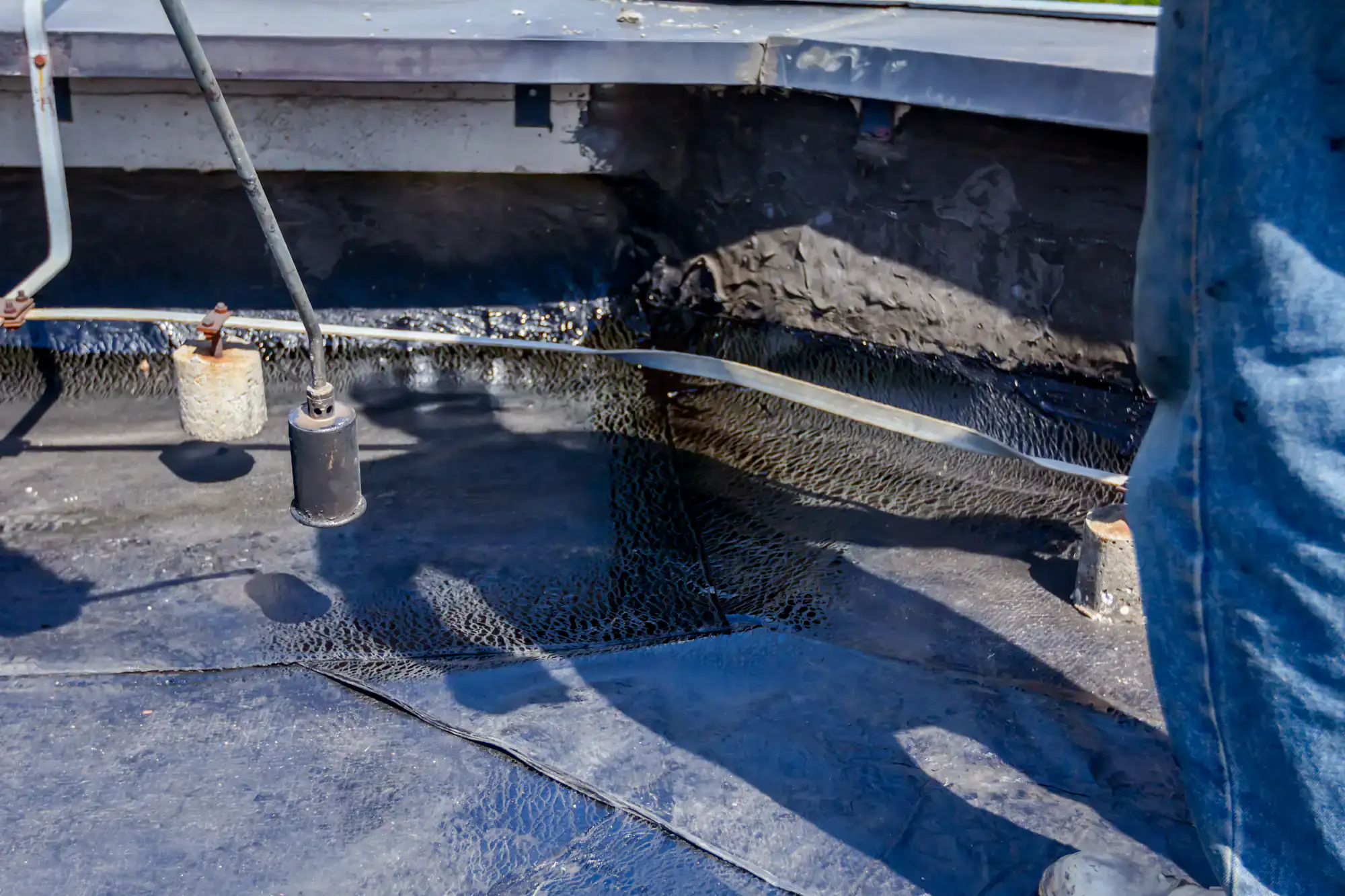
We start by completely preparing your roof surface. This means removing any damaged materials, fixing structural issues, and creating the proper slope for drainage. Most torch down failures happen because contractors skip this step.
Next, we install insulation and a vapor barrier. These layers are critical for preventing condensation problems that can destroy your roof from the inside out. We use materials specifically rated for Long Island’s climate conditions.
Then comes the torch down membrane installation. Our certified technicians use propane torches to heat and bond each layer of modified bitumen. This creates molecular-level adhesion – essentially welding the layers together into one waterproof system. The process requires precise temperature control and timing. Get it wrong, and you’ll have bubbles, weak spots, or incomplete bonds.
Finally, we install the cap sheet and complete all flashing details. Every penetration, every edge, every transition point gets properly sealed. We don’t leave until your roof is completely watertight.
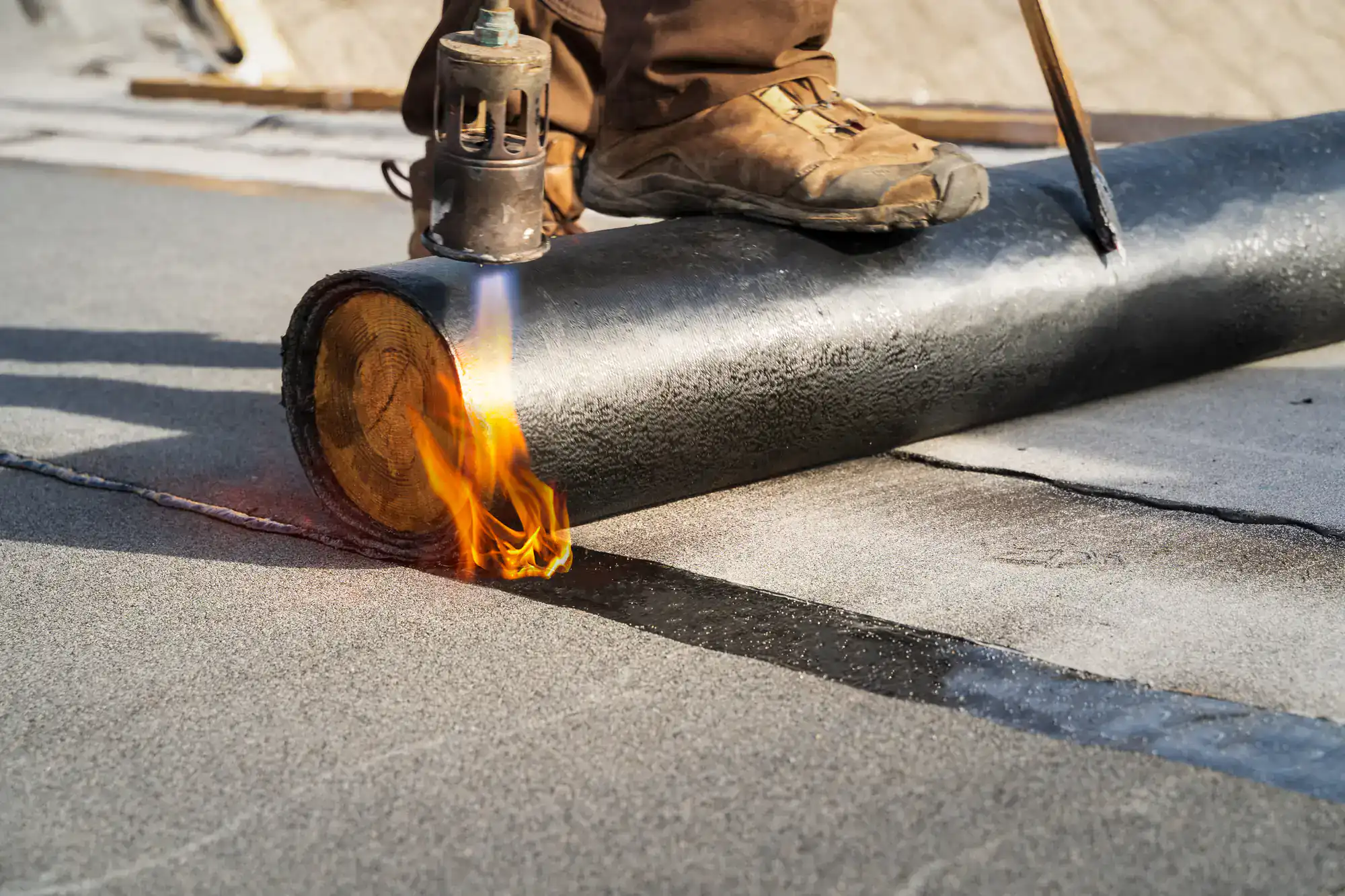
Ready to get started?
Your torch down system includes multiple layers of protection. The base sheet provides structural integrity. The intermediate layers add thickness and puncture resistance. The granulated cap sheet reflects UV rays and provides weather protection.
We use APP (Atactic Polypropylene) modified bitumen because it performs better in New York’s temperature extremes. This material stays flexible in cold weather and won’t soften in summer heat. It’s specifically engineered for the freeze-thaw cycles that destroy other flat roofing materials.
Local building codes in Suffolk County require specific fire ratings and wind uplift resistance. Our torch down systems exceed these requirements. We also include proper edge details, drain integration, and flashing systems that prevent the most common failure points on Long Island flat roofs.
Every installation comes with manufacturer warranties on materials plus our workmanship guarantee. We’re not going anywhere – we’ve been serving Yaphank and surrounding areas for over two decades.
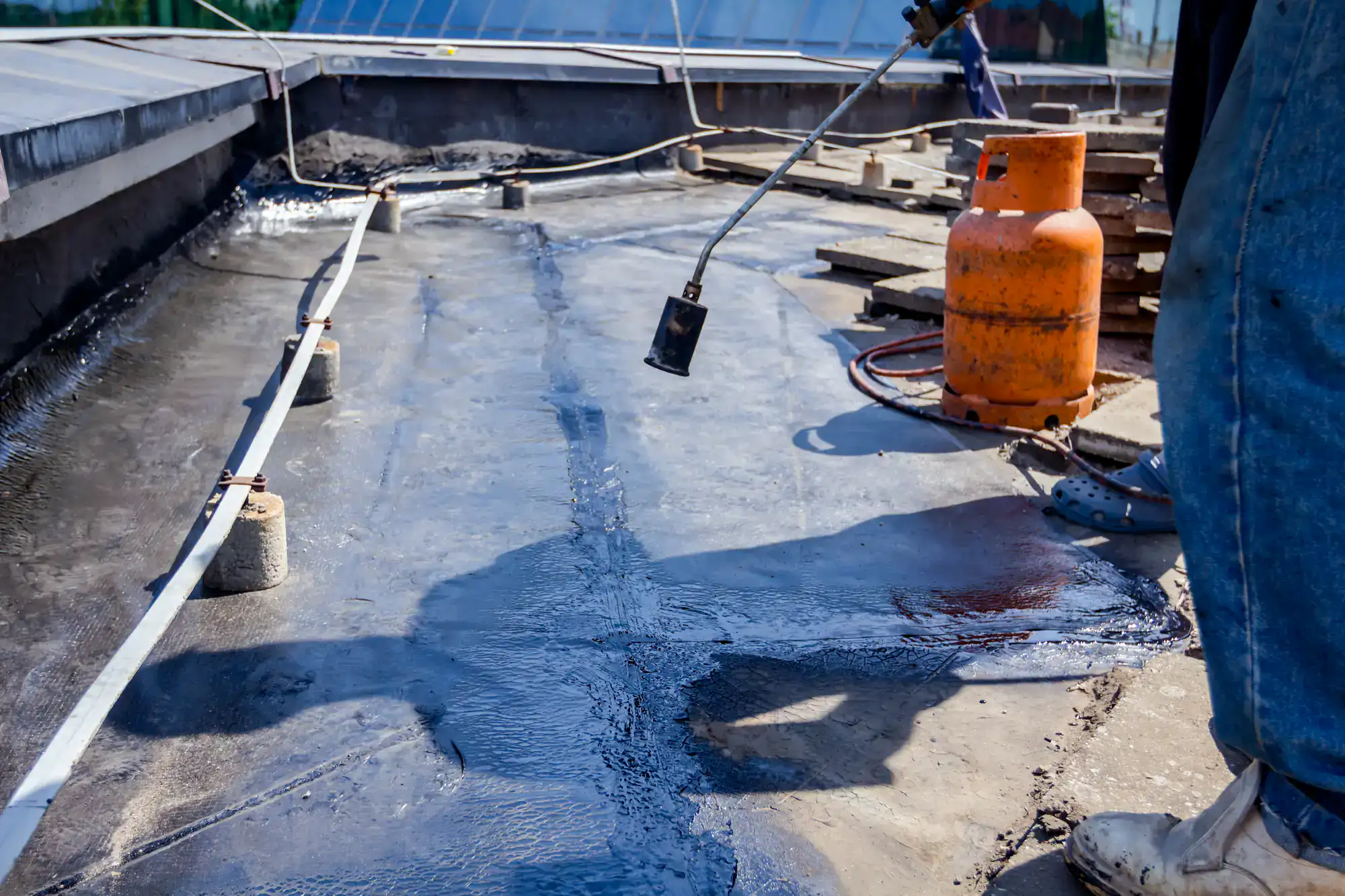
Properly installed torch down roofing typically lasts 20-25 years in Suffolk County conditions. The key factors are quality installation and using materials rated for New York’s weather extremes.
The modified bitumen we use is specifically designed to handle freeze-thaw cycles without cracking. It expands and contracts with temperature changes instead of breaking down like some other flat roofing materials. We’ve seen torch down systems we installed 15+ years ago that are still performing perfectly.
Regular maintenance extends the lifespan even further. Simple things like keeping drains clear and checking for debris can help your roof reach or exceed its expected life. We provide maintenance recommendations specific to your installation.
Torch down roofing offers superior puncture resistance and seam reliability compared to single-ply membranes like EPDM or TPO. The multiple layers provide redundant protection – if one layer gets damaged, the others keep working.
EPDM relies on glued seams that can fail over time, especially in temperature extremes. TPO is lightweight but more prone to puncture damage from falling branches or foot traffic. Torch down creates heat-welded seams that are actually stronger than the membrane itself.
For Suffolk County properties, torch down handles snow loads better than single-ply systems. The thicker profile and multi-layer construction distribute weight more effectively. This matters during heavy snow years when lighter membranes can develop stress tears.
In many cases, yes, but it depends on the condition of your existing roof and local building codes. We evaluate each situation individually to determine if a recover installation is appropriate.
The existing roof must be structurally sound with no significant moisture damage. We check for proper drainage, adequate structural support, and compliance with building code requirements for total roof thickness. If the existing system is failing or has multiple layers already, complete removal is usually necessary.
Recover installations can save money and reduce disposal costs, but they’re not always the best long-term solution. We’ll give you honest recommendations based on your specific situation, not what’s easiest for us to install.
Torch down roofing costs vary based on roof size, complexity, and specific materials used. Most residential installations in Suffolk County range from $8-12 per square foot, while commercial projects may be different due to scale and access factors.
The investment includes all materials, labor, permits, and cleanup. Additional costs may apply for structural repairs, insulation upgrades, or complex flashing details. We provide detailed written estimates that break down all costs so you know exactly what you’re paying for.
Remember that torch down roofing is a long-term investment. When you factor in the 20+ year lifespan and minimal maintenance requirements, the cost per year is often lower than cheaper alternatives that need frequent repairs or early replacement.
Torch down roofing requires minimal maintenance compared to other flat roofing systems. The main requirements are keeping drains and gutters clear, removing debris, and having annual inspections.
We recommend professional inspections every year, especially after severe weather events. This allows us to catch small issues before they become major problems. Simple maintenance like cleaning leaves from drains and checking for ponding water can prevent most torch down failures.
The granulated surface may need refreshing every 10-15 years to maintain UV protection, but this is a minor maintenance item. Overall, torch down systems are designed to be low-maintenance while providing reliable performance throughout their lifespan.
Yes, torch down roofing is an excellent choice for commercial buildings and is widely used throughout Suffolk County. The system meets or exceeds all local building codes for fire resistance, wind uplift, and structural requirements.
Commercial torch down installations often include additional features like enhanced insulation, specialized drainage systems, and access walkways. We coordinate with other trades to ensure proper integration with HVAC equipment, skylights, and other roof penetrations.
The installation process uses open flame torches, which requires certified technicians and proper safety protocols. Our crews are fully trained and insured for commercial torch down work. We handle all permit requirements and inspections to ensure code compliance.